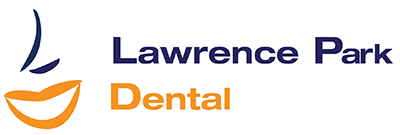Welcome to Lawrence Park Dental
General Dentistry in North York

From regular visits to your hygienist to full mouth rehabilitation, we promise a comfortable and positive experience for you and your family.
Good oral hygiene habits are important throughout life. Children need to be taught how to care for their teeth from a young age so they can enjoy a life time of oral health and a confident smile. Although they lead busy lives, teens and adults still need regular visits to the dentist to ensure they maintain excellent oral health. Older adults can experience changes in the condition of their teeth and gums, making oral hygiene even more important.
Through general and restorative dentistry procedures, Dr. J. Olavo Queiroz can diagnose and treat dental issues relating to the health and function of your smile. Our basic dental services include:
Dental Restorations
Dental restorations repair teeth which have been compromised due to cavities trauma or excessive wear.
Many people still have silver/mercury fillings in their mouths from years past. These fillings are not particularly pleasing to the eye, and we know that by unavoidable design, silver/mercury fillings ultimately result in a weaker tooth structure.
We use mercury-free and aesthetically pleasing restorations at Lawrence Park Dental.
Bonding
Applying composite resin bonding is a restorative procedure that uses tooth coloured material (enamel or porcelain like) to repair teeth that are decayed, chipped, fractured, mal positioned or discoloured. Tooth gaps can also be closed. Unlike veneers, which require laboratory work, bonding is done in the dental office. When more than half of the tooth’s biting surface is damaged (decayed, chipped, fractured or discoloured) an inlay or an onlay will be the best solution.
Extractions
Extractions are performed for a wide variety of reasons. Some of them are extracted because they are severely decayed; others may have advanced periodontal disease, or have broken in a way that cannot be repaired. Other teeth may need removal because they are poorly positioned in the mouth (such as impacted wisdom teeth), or in preparation for orthodontic treatment.
The removal of a single tooth can lead to problems related to your chewing ability, problems with your jaw joint, and shifting teeth, which can have a major impact on your dental health.
To avoid these complications, in most cases, we will discuss alternatives to extractions as well replacement of the extracted tooth.
Before having a tooth extraction, be sure to inform us of all medications that you have been taking, as there are several medicines that the dentist really needs to know about before beginning a tooth extraction.
Bone Graft
Bone graft is used to repair sites with inadequate bone structure and other defects of the jaws. These defects may arise as a result of tooth extractions, gum disease, traumatic injuries, tumor surgery and radiation treatment, some medical conditions, or congenital defects. Sinus bone grafts are also performed to replace bone in the posterior upper jaw.
Root Canal
Are you experiencing a pulsating or lingering or spontaneous toothache to cold, hot and pressure?
You might need a root canal.
A root canal is a treatment used to repair and save a tooth that is badly decayed or becomes infected. During a root canal procedure, the nerve and pulp are removed and the inside of the tooth is cleaned and sealed. Without treatment, the tissue surrounding the tooth will become infected and abscesses may form.
We are able to do most of the root canals cases at Lawrence Park Dental, but if your case is too complex, you might me referred out to an Endodontist, which is a dentist specialized in root canal procedures.
Dentures
Oral functionality and appearance are important reasons for wearing a partial or complete denture. It helps support your lips and cheeks. The loss of a back tooth may cause your mouth to sink and your face to look older.
A removable or partial denture replaces all lost teeth in the arch. By clasping the remaining adjacent teeth, the denture is held in place. Where none of the natural teeth remain, a complete denture is required.
Dentures over a normal course of time will wear and need to be replaced or relined in order to keep the jaw alignment normal. The alignment will slowly change as the bone and gum ridges recede or shrink due to the extraction of the teeth. Regular dental examinations are still important for the denture wearer so that the oral tissues can be checked for disease or change.
A dental implant retained denture is a great alternative to conventional complete dentures supported by gum tissue only. It is one of the most wanted procedures to solve this kind of problem.
Why Choose Lawrence Park Dental, in North York?
Comprehensive Care: From routine cleanings to full mouth reconstructions, we offer a full spectrum of dental treatments.
Patient-Centric Approach: Your comfort, safety and satisfaction are our top priorities. Experience personalized care tailored to your unique needs.
Experienced Team: Our knowledgeable and friendly dental professionals bring years of expertise to every aspect of dentistry.
Conveniently located at the York Mills Centre, right on top of the York Mills Subway station.
FREE underground parking for our patients.
Schedule Your Appointment Today!
Take the proactive step toward a healthier smile! Request your appointment with us or call us at (416) 488-7454. Don’t compromise on your oral health. Trust us for exceptional dental services in North York. We look forward to welcoming you to our dental family!





